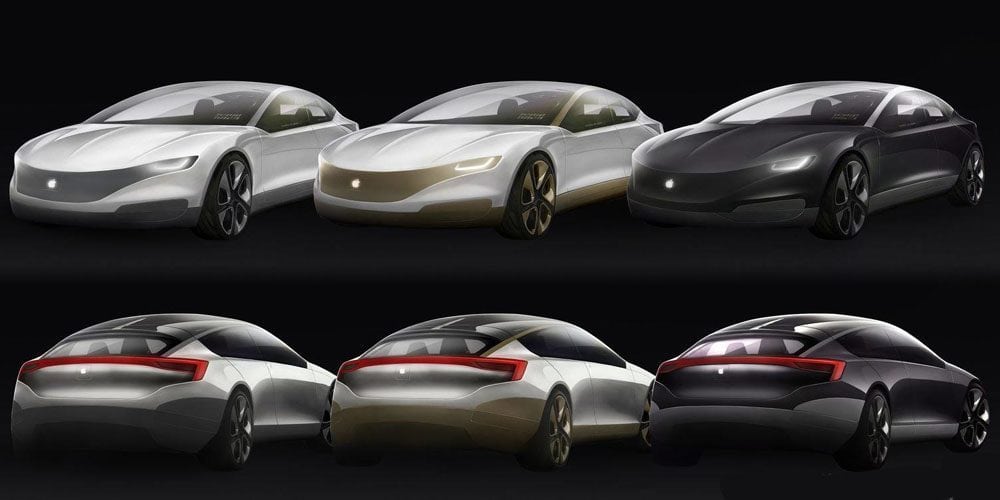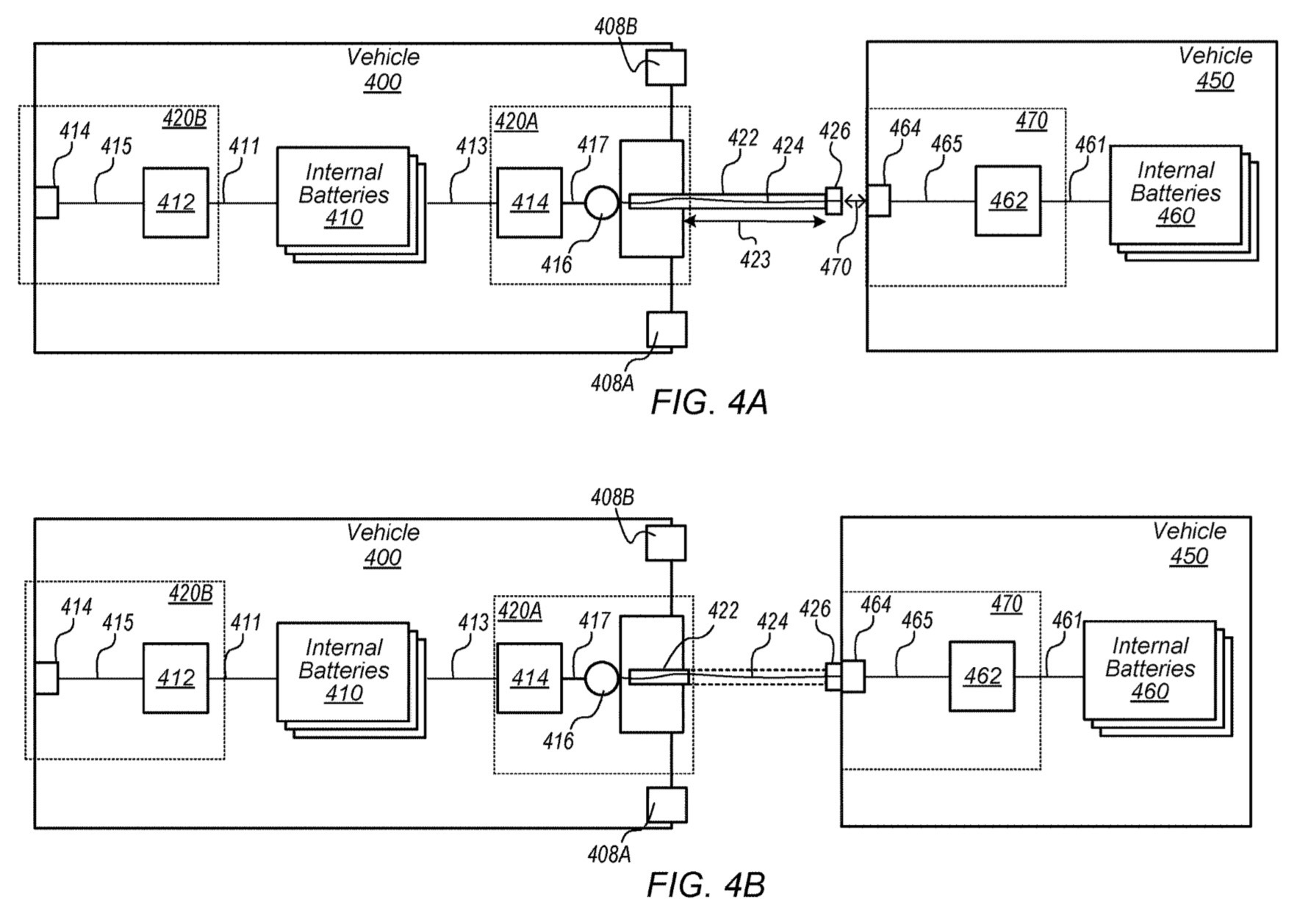
Apple has today filed a patent for a set of intriguing new autonomous vehicle features called “Peloton.” The filing describes the ability for multiple self-driving cars to share battery capacity via a “connector arm,” dynamically adjust positions, increase efficiency, and more.
Apple filed the details with the US Patent and Trademark Office today. Named “Peloton,” which in cycling refers to the main group of riders, this patent describes some advanced features to make autonomous vehicles travel further and more efficiently.
Apple says that its peloton system could be used with as few as two autonomous vehicles, but it sounds like many cars could be linked together in a caravan to see greater benefits like increased aerodynamics and more. The summary of the patent gives a good overview of what Apple is trying to accomplish.
A vehicle configured to be autonomously navigated in a peloton along a roadway, wherein the peloton comprises at least the vehicle at least one additional vehicle, is configured to determine a position of the vehicle in the peloton which reduces differences in relative driving ranges among the vehicles included in the peloton. The vehicles can dynamically adjust peloton positions while navigating to reduce driving range differences among the vehicles. The vehicle can include a power management system which enables the vehicle to be electrically coupled to a battery included in another vehicle in the peloton, so that driving range differences between the vehicles can be reduced via load sharing via the electrical connection. The vehicle can include a power connector arm which extends a power connector to couple with an interface of another vehicle.

Apple says that the arm would make a connection between the internal batteries of the vehicles. After more dense descriptions of the apparatus, the filing describes the method of using the system that aims to share energy between multiple vehicles and balance driving range.
A method, comprising: performing, by at least one computer system installed in a vehicle (“ego-vehicle”) configured to be autonomously navigated in a peloton along a roadway, wherein the peloton comprises the ego-vehicle and at least one additional vehicle: based on a comparison of driving ranges of each of the ego-vehicle and the at least one additional vehicle, determining a particular configuration of the peloton, which comprises a particular peloton position in which the ego-vehicle is navigated relative to the at least one additional vehicle, which reduces a difference of the relative driving ranges of the ego-vehicle and the at least one additional vehicle; and generating a set of control commands which cause the vehicle to be navigated in the peloton at the particular peloton position, according to the particular configuration of the peloton.
Apple further describes that the connector arm would be extending from a retracted position when needed.
The method of claim 11, wherein: the power connector is coupled to the at least one battery via a power cable; the ego-vehicle comprises a power connector arm which is configured to extend the power connector from a retracted position in the ego-vehicle, and across a spacing distance between the ego-vehicle and the at least one additional vehicle,
The patent also describes that the autonomous driving system would analyze the driving ranges to determine the organization of the peloton.
One or more non-transitory computer-readable media storing program instructions that when executed by one or more processors cause the one or more processors to: based on a comparison of driving ranges of each of a vehicle (“ego-vehicle”) and at least one additional vehicle, determine a particular configuration of a peloton
Per usual, Apple files many patents that never become a reality, but these are certainly some fascinating details. The full patent can be read here.
At this point, an actual Apple Car isn’t expected. Rather, the company is believed to be spending its time working on an autonomous driving system that other manufacturers will implement. Most recently, analyst Ming-Chi Kuo predicted that Apple’s future autonomous vehicle system will make use of its own custom chips by 2023.
